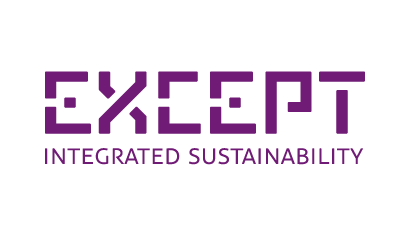What does sustainability mean?
Sustainability is a hot topic right now. But what does it really mean, and which parts should you be paying attention to? Here, we discuss what it means to be sustainable.

Whether you’re interested in sustainability or not, the chances are that you’ve heard of it. While sustainable practices have been around for thousands of years, it has only become a ‘popular’ topic in the last ten years or so. People can be put off finding out more about sustainability because it sounds complicated, pointless, or expensive, but we’re here to help distinguish the facts.
In this article, we’ll be discussing the definition of sustainability, why it’s important, and what the three pillars of sustainability are. We’ll explore the relevance of the UN’s Sustainable Development Goals before highlighting some of the ways we can move towards a more sustainable way of living as a society, and as individuals.
What is the definition of sustainability?
There are a number of different definitions of sustainability, but looking at the word etymologically, to ‘sustain’ means to keep something going or provide support. In this way, we can view sustainability as an approach to sustaining life and supporting the planet.
Thinking about sustainability in a more practical sense, it can usually be defined as any action or process we perform that causes little or no harm to the natural world or living creatures, including other humans. It’s all about finding ways to meet the demands of life without causing detriment to society or compromising future generations. It’s not all about the environment either, which we’ll discuss more when we talk about the three pillars of sustainability.
Why is sustainability important?
Sustainability is important because we live on a planet of finite resources, but often we treat it like our resources are infinite. Also, we’ve become used to instant gratification where we want the cheapest, fastest option possible, whether we’re thinking about food, clothes, or energy.
If we continue to live without consideration for our surroundings or fellow humans, we could make the planet uninhabitable, physically, socially, and economically, for future generations. We can already see the impact of our actions manifesting in issues such as extreme weather, mass extinction and exploitation of workers, and these problems are just the tip of the iceberg.
However, it’s not all doom and gloom – sustainable practices are becoming more commonplace, and we have a real chance to make a difference to the world we live in. There is a lot of hope to be found in sustainability, as it offers tangible solutions to a lot of problems we face.
Although governments and corporations should take a great deal of the responsibility for implementing sustainable changes and solutions, it’s important to see the value in individual change. As Kelly Levell, a sustainability consultant at We Do Ethical says, “in the end, it will be the individuals who will create the demand for the brands to produce more and more products that lessen harm to people, planet and animals”. If we continually demand change through positive action, corporations will have to adapt in order to survive.
What are the three pillars of sustainability?
The first thing most people go to when they think about sustainability is looking after the environment. However, sustainability is not only about climate change. It’s about the environment, economy and society, and all of these things directly interlink with each other.
The key to sustainability is recognising that none of these three pillars stand alone. The global economy has a massive impact on societal issues, which in turn affect the way we treat the planet. This is why it’s important to think about the bigger picture when trying to be sustainable – for example, if an item of clothing is made with sustainable materials, but is produced using slave labour, it is not a sustainable garment.


Environment
Environmental sustainability is all about trying to conserve the earth’s resources, find renewable alternatives, prevent global warming and protect our animals and habitats. Energy is a hot topic in environmental sustainability, as the process of obtaining and using fossil fuels (coal, oil and gas) is extremely detrimental to the environment. If you want to learn more about sustainable alternatives, you can check out our renewable energy post.
If you want to learn more about how to help the environment and take action during the climate crisis, we have a few courses available for you. Explore how adaptive governance and policy changes can make a difference in our Making Climate Adaptation Happen course, or discover how environmental research can provide global solutions in our Tackling Environmental Challenges for a Sustainable Future course.
If you want to understand the intersection between environmental issues and people, try our course on Environmental Justice.
Economy
The economy is probably not something you normally associate with sustainability, but it’s actually hugely important. Having a sustainable economy is about not favouring economic growth at the cost of social, environmental and cultural factors, but instead finding a good balance between growth and responsibility. This isn’t just for the benefit of the planet, but can also benefit big corporations by reducing wasted effort, time and money.
One of the biggest issues with the current global economy is that there is a huge imbalance of wealth, which leads to poverty and a whole load of other repercussions for society and the environment. To find out more about sustainable economies, you can try our Introduction to Sustainable Bioeconomy course, which will discuss how a circular bioeconomy could solve issues in the European economy.
Society
Ecologists view humanity as part of the same entity as the planet and natural world, rather than seeing the environment as something separate from us. This is where society as a pillar of sustainability comes into play. Discussing society as a whole means that we don’t leave people and communities behind in the fight for more sustainable living. As we mentioned earlier, an item isn’t sustainable if it results in negative social repercussions, e.g. unfair wages, poor working conditions or polluted water sources.
To find out more about the link between humanitarian issues and sustainability, you can take our course Sustainable Development in Humanitarian Action, and discover the key to helping humanitarian organisations more accountable. If you’re more interested in how everything is interconnected, Systems Thinking for Sustainability is an ExpertTrack that’ll help you analyse and design complex systems for sustainable development.
What are the UN’s Sustainable Development Goals?
The Sustainable Development Goals (or SDGs) were created in Rio de Janeiro in 2012 at the United Nations Conference on Sustainable Development. They were an attempt to map out a series of goals that would tackle the most important global challenges we face today, and the deadline was set at 2030.
If you’re interested in learning more about how we can implement changes related to the SDGs, why not try our course Organising for the Sustainable Development Goals, and discover what needs to happen on an individual and societal level.
The SDG’s
All of the information below is taken from the United Nations official website.
- End poverty. End poverty all over the world.
- Solve world hunger. End hunger, improve nutrition, and promote sustainable agriculture.
- Ensure health and wellbeing. Promote healthy living and good wellbeing across all ages.
- Good quality education. Make sure education is of good quality, accessible and inclusive, and promotes lifelong learning.
- Create gender equality. Empower women and girls and obtain gender equality.
- Clean water and sanitation. Ensure that water is clean, accessible, and managed sustainably.
- Clean, affordable energy. Energy should be affordable, reliable, and sustainable for everyone.
- Decent work and growth in the economy. Promote employment for all, and promote sustained, inclusive, and sustainable economic growth.
- Industry, innovation, and infrastructure. Build new infrastructure and promote sustainable and inclusive innovations within industries.
- Less inequality. More equality across the globe.
- More sustainable cities and communities. Make cities and communities feel safe, inclusive, and sustainable.
- Responsible consumption and production. Ensure patterns of production and consumption are sustainable and responsible.
- Action against climate change. Take urgent action to combat the climate crisis and its impact.
- Protecting marine life. Ensure marine resources are conserved and used sustainably.
- Preserving life on land. Protect and preserve land ecosystems including forests. Prevent deforestation, desertification, and loss of biodiversity.
- Create just and strong institutions and peace. Promote peace and inclusivity in societies to ensure sustainable development and just institutions for all.
- Strong global partnerships. Strengthen global partnerships to ensure sustainable development implementation.
What are some of the challenges with the Sustainable Development Goals?
Looking at the SDGs, they certainly seem like an admirable set of goals, and if we can achieve them then the world will be in a much better state than it is today. However, there are certain criticisms of the goals that should be addressed.
It’s important to criticise input from large governmental organisations because often these are the people with the most power to make a positive difference. It’s also critical to understand that these goals are not a guideline on how to live sustainably, and they will inevitably fall short in certain areas.
One of the main flaws with these goals is that they are used to measure how ‘sustainable’ a certain country is, using an SDG index. However, some people have pointed out that only four of the SDGs actually focus on ecological sustainability, with the other 13 focusing more on development. This means that we’re actually congratulating countries more on being well developed as opposed to being sustainable, meaning wealthier countries will tend to have a higher index than poorer countries.
Another criticism that can be made of the SDGs is that they focus more on the symptoms of global issues rather than the causes. For example, one goal is to end poverty, but will we be able to do this without putting an end to extreme wealth? If all-powerful banks, billionaire tax evaders and offshore accounts are allowed to exist, will we tackle the root cause of poverty? Similarly, with tackling gender equality, how can we empower women if we don’t prevent violence towards women from men?
Despite criticisms, we do think that the SDGs are a great thing. It’s commendable that so many countries have committed to making a difference to the world, and important that sustainable development issues are recognised on the world stage.


How can we all move towards sustainable living?
It’s become a lot easier in recent years to be informed about sustainability, and this surge in information means that we can try to take action. Since a lot of the things we’re going to discuss rely on policy change, we definitely recommend emailing your MP or local representative on subjects that you’re passionate about, signing petitions and attending peaceful protests.
However, we cannot underestimate the power of individual change or consider it pointless. Our decisions can influence others to make more sustainable life choices too, so you might have more impact than you initially think. It can even be fun to unleash your potential and explore the benefits of sustainable living.
Sustainable food and farming
There are certainly lots of debates about the most sustainable approach to food production and consumption. Should you be vegan or vegetarian, or should you only buy organic ingredients? The best approach to building a sustainable diet is to be more intentional about the food you eat. Cutting down on meat and dairy can certainly help, and there are plenty of fantastic meat and dairy alternatives in supermarkets.
It also doesn’t have to be expensive to eat more ethically. Rather than going to an expensive food hall, why not try a local farmer’s market, where the produce is more likely to be fresh? If you do your research, you may also be able to find local farmers who commit to more ethical practices regarding treatment of animals and agriculture.
Even if this is too expensive, you can shop more sustainably at supermarkets by choosing options with less plastic packaging and planning out your meals to reduce waste. There are also some fantastic food waste apps such as Too Good to Go and Olio that you can check out.
Sustainable fashion
The fashion industry is responsible for an estimated 10% of global carbon emissions and is also the second-largest consumer of the world’s water. These statistics are shocking, as they show just how harmful fashion can be, despite its reputation as being something fun and creative.
There are plenty of things you can do to try and combat fashion pollution. Fast fashion companies who produce and ship out clothes at an alarmingly fast and cheap rate cause some of the biggest problems. They don’t pay their workers fairly, factory conditions are poor, they waste extreme amounts of textiles and water and they make bad quality products that won’t last.
A great alternative to fast fashion is buying secondhand clothes, whether that’s from a charity or thrift shop, or an app like Depop or Vinted. There are also some fantastic sustainable brands out there, and you can use websites like Good On You to check the sustainability ratings of individual companies.
It’s good to be thorough when checking if a brand is truly sustainable and trustworthy, as greenwashing – companies pretending to be sustainable as a marketing tactic – is rampant in the current climate.
It’s worth noting that the best thing you can do, is to reduce your buying of clothes in the first place, and make sure you look after the clothes you own and only buy things that you really love. You can even learn how to repair, rework or upcycle your clothes so that you’ll want to wear them again. To learn more about the future of fashion, you can try our course on Fashion Sustainability.
Sustainable technologies and renewable energy
A lot of exciting and sustainable innovations are taking place in the field of technology, particularly when it comes to the power of AI. We also have to acknowledge how the internet has helped us become so much more informed about sustainability, through surveys, big data analytics and just good old google searches.
Thinking about what you can do personally to use more sustainable technologies, the biggest step you can take is switching to renewable energy. Companies like Big Clean Switch help you make the switch if you’re a bit daunted.
If you don’t want to switch providers, you can install a smart meter and just aim to be more aware of how much energy you use every day. To learn more about energy consumption and helping your community be more sustainable, try our Sustainable Energy Access for Communities course.
When it comes to other technologies, it’s important to try and get as much use out of your devices as possible. It’s easy to fall into the trap of buying a new, sleek phone every year, but scientists warn that each smartphone requires 30 different chemical elements to work, and we only have a finite amount of these elements.
Sustainable transportation
A lot of carbon emissions come from transportation. In fact, one-quarter of global emissions are caused by the way we travel, and three-quarters of that is caused by road vehicles. Cars are especially bad, and a big reason why huge cities have a lot of air pollution. Instead of replacing car parts damaged in a fender bender, you can simply repair them using a car dent removal service, saving money and the environment.
You can do your bit by walking and cycling wherever you can, or using public transport such as buses or trains. If you’re interested in how transport planning can help create sustainable cities, we have a course in Transforming Urban Mobility.
While companies can help encourage more sustainable transport methods through schemes like carpooling or cycle to work, you may also want to consider more sustainable personal options such as electric cars and scooters, or even hydrogen cars. To find out more about sustainable road transport, try our Introduction to Low Emission Road Transport course.
We all also know that flying is extremely bad for the environment – it’s estimated to make up between 2% and 5% of global emissions. However, nobody is saying you can’t go on holiday. Simply try to reduce the number of unnecessary flights you’re taking, and maybe try a staycation once in a while.
Final thoughts
Hopefully, this guide to sustainability has helped you understand what it is and why it’s so important. Perhaps you’ve even been inspired to make changes to your own life or learn something new today with one of our fantastic sustainability courses.
Whatever the outcome, at FutureLearn, we hope we can do our bit by transforming access to education around the world. After all, it is education that enables us to understand topics such as sustainability and climate change, and when we understand, we are able to make a difference.










